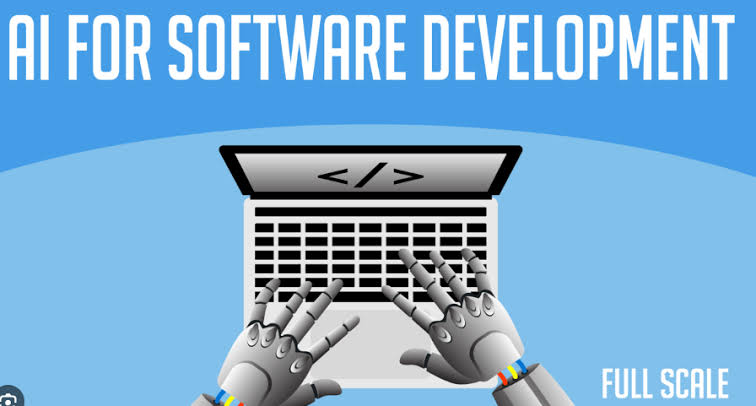Field of artificial intelligence (AI) continues to evolve rapidly. It is driven by advancements in technology. Also there is increased access to powerful tools. Open-source software has become cornerstone of AI development. It provides accessible, customizable and collaborative platforms for researchers developers and organizations. This article explores top ten open-source software tools for AI development. It details features, uses and contributions to AI ecosystem
1. TensorFlow
Developed by Google Brain TensorFlow is one of most widely used open-source frameworks for machine learning and deep learning. TensorFlow offers comprehensive ecosystem. It includes tools, libraries and community resources. It supports various neural network architectures and algorithms. This makes it suitable for tasks such as image and speech recognition natural language processing NLP. TensorFlow's flexible architecture allows for deployment across multiple platforms including desktops, mobile devices and cloud environments
2. PyTorch
PyTorch developed by Facebook's AI Research lab, is another leading open-source framework. It is renowned for dynamic computational graph and ease of use. PyTorch often gets favored for its intuitive interface. This interface facilitates rapid experimentation and development. It provides wide range of functionalities for building and training neural networks. PyTorch is especially popular in academic research. Support for GPU acceleration and integration with Python makes it powerful tool for deep learning applications
3. Keras
Keras is high-level neural networks API written in Python that runs on top of other machine learning frameworks. These include TensorFlow and Theano. Its user-friendly interface simplifies process of building and training deep learning models. This makes it excellent choice for beginners. Keras offers modularity extensibility and wide range of pre-built layers and models. These features enable developers to quickly prototype and experiment with neural network architectures.
4. Scikit-Learn
Scikit-Learn is versatile open-source library for machine learning in Python. It provides simple and efficient tools for data mining and data analysis. The library covers various supervised and unsupervised learning algorithms. Scikit-Learn excels in ease of use. It also integrates well with other scientific libraries like NumPy and pandas. It is particularly well-suited for tasks such as classification and regression. Clustering and dimensionality reduction are also effective uses.
5. Apache MXNet
Apache MXNet is open-source deep learning framework designed for efficiency and scalability. Developed with contributions from multiple organizations including Amazon, MXNet supports wide range of programming languages including Python, Scala R. Its support for both symbolic and imperative programming is notable. Distributed training capabilities make it suitable for large-scale AI applications. MXNet is known for its performance and ability to handle complex models and large datasets
6. Caffe
Caffe developed by Berkeley Vision and Learning Center (BVLC), is deep learning framework focused on speed and modularity. It particularly well-suited for image classification and convolutional neural network (CNN) tasks. Caffe's design emphasizes performance. It includes pre-trained models that can be fine-tuned for specific tasks. While Caffe has been somewhat overshadowed by newer frameworks it remains valuable tool for certain types of AI applications
7. OpenCV
OpenCV (Open Source Computer Vision Library) is widely used library for computer vision and image processing. It provides comprehensive set of tools and algorithms for image and video analysis. This includes object detection. Also facial recognition and feature extraction. OpenCV supports multiple programming languages. These include C++, Python and Java. It is often used in conjunction with machine learning frameworks. This helps build advanced computer vision systems
8. Hugging Face Transformers
Hugging Face Transformers is library dedicated to natural language processing (NLP) and has gained prominence for pre-trained language models. It provides easy access to state-of-the-art models such as BERT GPT-2 and T5. These models can be fine-tuned for various NLP tasks like text classification, translation and summarization. Library's user-friendly interface and extensive documentation make it popular choice for researchers and developers working with language models
9. NLTK
The Natural Language Toolkit (NLTK) is comprehensive library for natural language processing in Python. It offers wide range of tools for text processing. These include tokenization tagging, parsing and semantic reasoning. NLTK is designed to support both research and practical applications in NLP. Its extensive collection of linguistic resources and corpora makes it valuable tool for exploring and analyzing human language data
10. Fastai
Fastai is deep learning library built on top of PyTorch. It aims to make AI development more accessible and efficient. It provides high-level abstractions and pre-built models for various tasks. These tasks include image classification text analysis and collaborative filtering. Fastai emphasizes ease of use and rapid prototyping. This makes it suitable for both beginners and experienced practitioners. Its integration with PyTorch allows users to leverage capabilities of PyTorch. At the same time, they benefit from Fastai's user-friendly interface
Conclusion
Open-source software plays pivotal role in AI development. It provides powerful and flexible tools for building and deploying AI models. Each tool discussed—TensorFlow PyTorch, Keras Scikit-Learn, Apache MXNet Caffe, OpenCV Hugging Face Transformers, NLTK Fastai—offers unique features and strengths. These cater to different aspects of AI development. By leveraging these tools, developers and researchers can advance their AI projects. Organizations can contribute to growing AI community. They can drive innovation across various domains.




